On October 26, 1881, lawman Wyatt Earp, his brothers Morgan and Virgil, and his friend Doc Holliday faced off against five outlaws in Tombstone, Arizona — culminating in the shootout at the O.K. Corral.
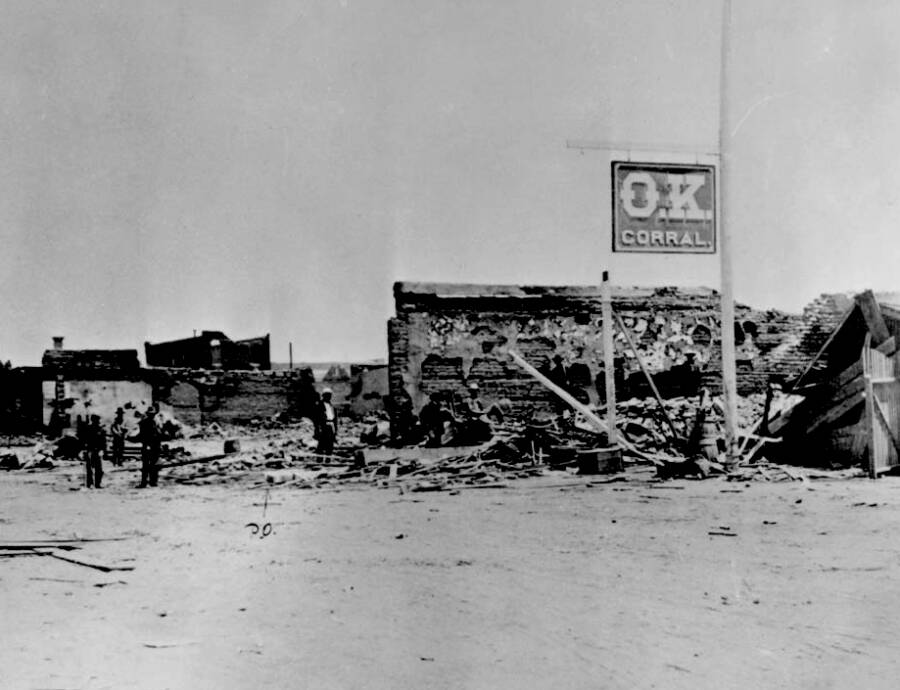
Wikimedia CommonsJust a few months after the gunfight at the O.K. Corral took place on October 26, 1881, the site suffered a fire (pictured above).
The gunfight at the O.K. Corral has become an iconic event in the untamed history of the Wild West. Lawman Wyatt Earp, his brothers Morgan and Virgil, and his faithful friend Doc Holliday took on a group of lawless cowboys who ran ragged through the frontier town of Tombstone, Arizona. It’s a classic tale of cops and robbers in the Old West.
On October 26, 1881, cowboys Ike Clanton, Frank McLaury, Billy Claiborne, Tom McLaury, and Billy Clanton faced off against the Earp brothers and Holliday on Fremont Street, roughly six blocks away from the O.K. Corral. The conflict lasted just 30 seconds but ended in the deaths of three cowboys.
In recent decades, movies like Tombstone and certain history texts have romanticized the shootout — and perpetuated false facts.
For one thing, some continue to debate whether the Earp brothers were truly noble lawmen who sought to tame the Wild West or brutal vigilantes who committed a small-town massacre. But in the Old West, the line between hero and criminal was much blurrier than you’d expect in shootouts — and this famous gunfight was no exception.
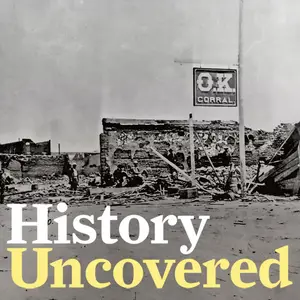
Wyatt Earp Arrives In Tombstone, Arizona, The Setting Of The Gunfight At The O.K. Corral
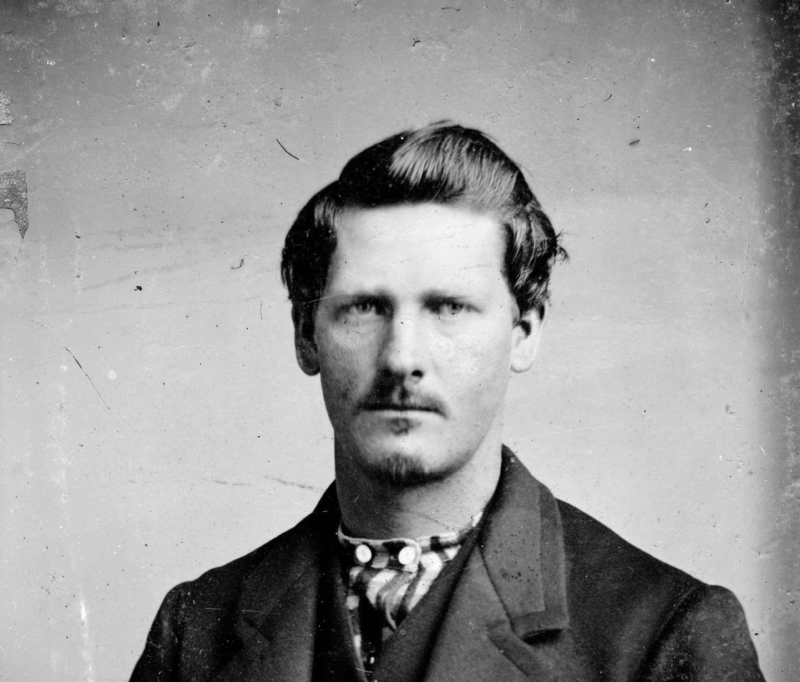
Wikimedia CommonsWyatt Earp, a lawman involved in the gunfight at the O.K. Corral, at age 21 in Lamar, Missouri. Circa 1869-1870.
The small, historic town of Tombstone, Arizona was founded by Ed Schieffelin in 1877, who was determined to prospect on Apache land, despite warnings that “the only stone you’ll find out there is your tombstone.”
Fortunately for Schieffelin, he instead found a silver deposit, which eventually produced over $37 million in profits.
Before long, wealthy merchants set up shop in Tombstone, in the hopes of cashing in on the nearby mine. The town was soon aglow with restaurants, saloons, theaters, and even a bowling alley. The O.K. Corral was one of eight horse liveries in the town. Indeed, the streets of Tombstone were flooded with cash — but they were also lacking reliable lawmen to maintain order.
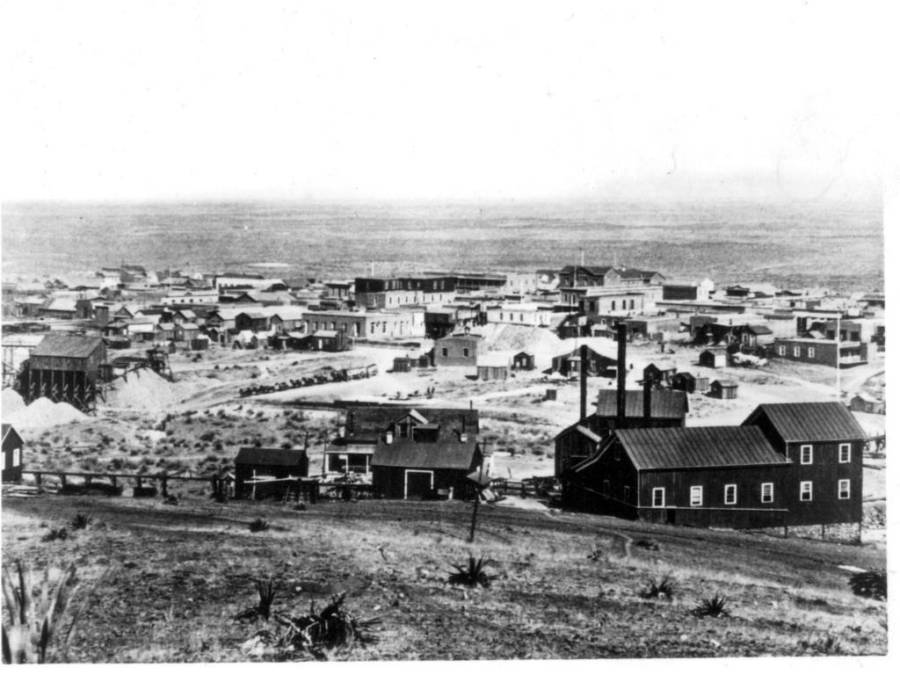
Wikimedia CommonsTombstone, Arizona, as photographed by C. S. Fly in 1881.
The town’s population soon reached well over 8,000, making it one of the largest frontier towns in the region. As more people trickled in, Tombstone started attracting a dangerous crowd and became an easy target for rustlers and bandits. The town was also overrun with gambling houses, brothels, and violence, and smuggling and theft became commonplace.
Unsurprisingly, many worried about Tombstone’s lawless reputation.
But in December 1879, the brothers Wyatt, Virgil, and Morgan Earp, along with a gunslinging former dentist named Doc Holliday, rolled into town — determined to administer their own brand of justice.
The Cochise County Cowboys Kill A Town Marshal
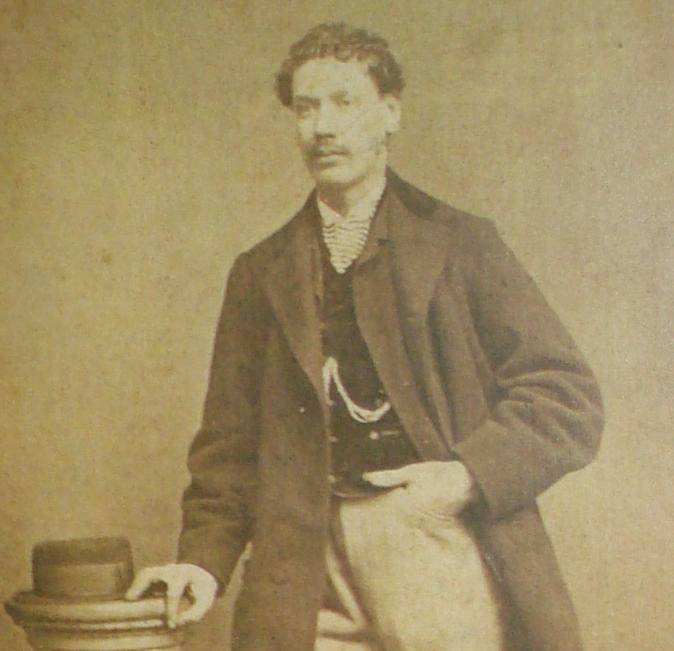
Wikimedia Commons“Curly Bill” Brocius, the cowboy who killed Tombstone Marshal Fred White.
Wyatt Earp was a former lawman of Lamar, Missouri, where his family used to live. After his wife died, Earp wandered the West and got himself into some legal trouble. He eventually settled in Dodge City, Kansas, where he became the deputy town marshal and built a life alongside his new common-law wife, Mattie Blaylock. In 1879, he set off with his brothers and a new friend he’d made in Kansas, Doc Holliday, to Tombstone.
His brother Virgil Earp was a former Union Army soldier and lawman in Arizona. Shortly before arriving in Tombstone, he became a Deputy U.S. Marshal and was tasked with protecting the town from lawless cowboys. As for Wyatt Earp, he decided to become a stagecoach messenger shortly after arriving in town — and he eventually became deputy sheriff.
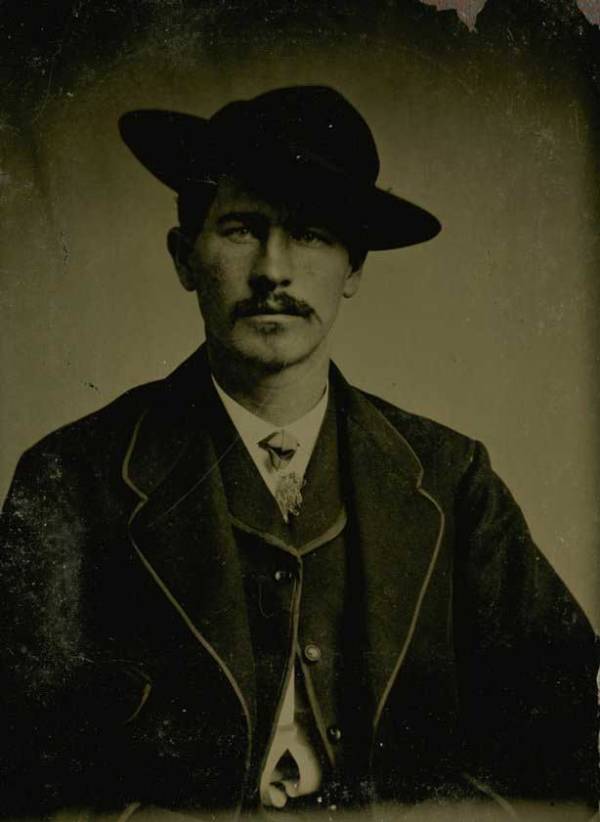
Wikimedia CommonsWyatt Earp in a business suit.
In the Old American Southwest, “cowboy” referred to an outlaw or a member of a gang of cattle smugglers and horse thieves. In Tombstone, a crew known as the Cochise County Cowboys frequented the town.
The Cochise County Cowboys went from being a nuisance to the Earp brothers’ mortal enemies when one of their members accidentally killed the town marshal, Fred White, on October 28, 1880. That night, Fred White and Wyatt Earp had been summoned to calm down drunk Cowboys unloading their pistols into the sky. White asked the men to surrender their weapons, and they complied, but “Curly Bill” Brocius’ gun went off and shot White.
It was clearly an accident, and even Fred White would insist as much while lying on his deathbed, as did Wyatt Earp, who defended Brocius while he was on trial. But the death of Fred White saw Virgil Earp named the new marshal in his stead and with that, a new era came to Tombstone.
The Lead-Up To The Gunfight At The O.K. Corral
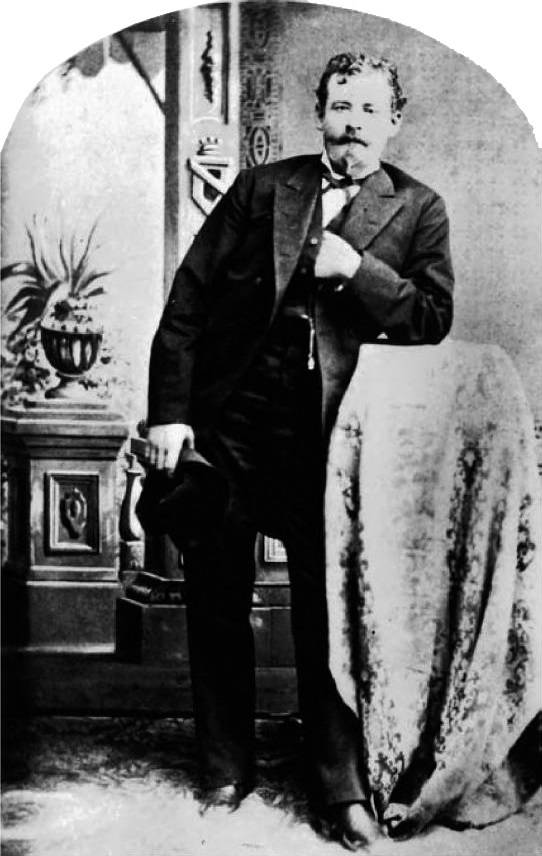
Wikimedia CommonsIke Clanton, a member of the Cochise County Cowboys, photographed by C. S. Fly. Tombstone, Arizona. 1881.
Under Virgil Earp, it was illegal to carry any weapon within the town’s limits — a law that gave the Earps just cause to arrest any cowboy they saw.
Meanwhile, the county sheriff, John Behan, did little to bring thieving cowboys to justice. This angered the Earps, especially Wyatt, whose hopes to become county sheriff were dashed when Behan took the position.
Wyatt Earp reasoned that he could gain some good publicity and a better shot at winning county sheriff if he could prove himself as a powerful lawman. He struck a deal with a rancher named Ike Clanton, who was close with the Cowboys, to help bring the thieves to justice. In return for his cooperation, Earp promised Clanton a $6,000 reward.
The deal did not last long and when it dissolved, Earp was left in the lurch.
On October 25, 1881 — the day before the gunfight at the O.K. Corral — Doc Holliday confronted Clanton in a saloon. The men fought viciously, and later that day, Clanton began making threats against the Earp brothers.
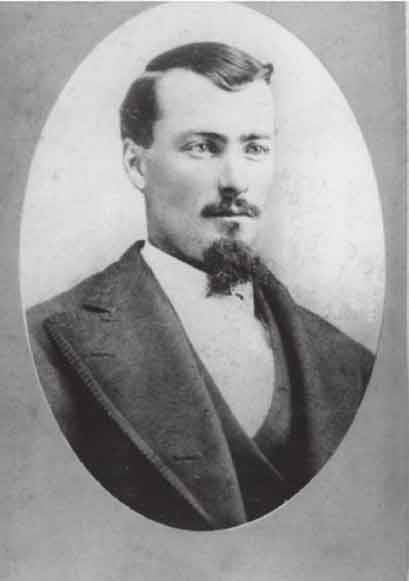
Wikimedia CommonsFrank McLaury, one of the Cochise County Cowboys who allegedly participated in the Skeleton Canyon Massacres, which took the lives of several Mexicans in the Peloncillo Mountains.
Around noon the next day, Virgil and Morgan Earp learned that Ike Clanton was drunk, armed, and yelling that he was looking for a fight. Soon, they had put him under arrest for carrying a weapon. Clanton, by most accounts, went willingly — after Virgil disarmed him with a pistol whipping.
As Wyatt Earp was leaving the courthouse, he bumped into another Cowboy, Tom McLaury, and, finding that he was carrying a gun, pistol-whipped him twice in the head and left him bloody on the ground.
The Dramatic Story Of The Gunfight At The O.K. Corral
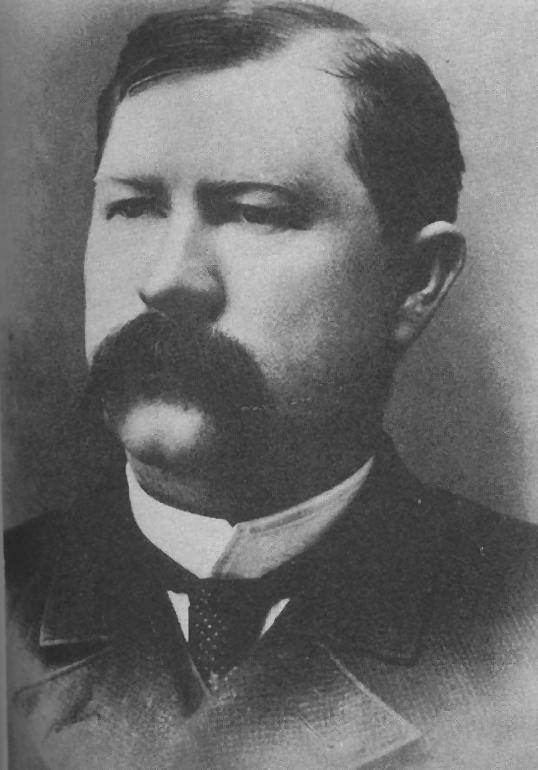
Wikimedia CommonsCity Marshal Virgil Earp. Circa 1880.
Around 3 p.m., the Earp brothers and Doc Holliday spotted five Cowboys loading up guns. Ike Clanton and Tom McLaury were part of the group, along with Billy Claiborne, Frank McLaury, and Clanton’s 19-year-old brother, Billy.
The Cowboys then went off to plot revenge behind the O.K. Corral. Next, in a narrow, empty lot near Fly’s Photography Gallery, the Earps and Holliday came upon the Cowboys. Then, Virgil Earp yelled toward the Cowboys, “Throw up your hands; I have come to disarm you!”
What exactly transpired next remains murky, as it’s unclear who fired first.
No matter, 30 shots were fired within 30 seconds. In this time, Doc Holliday’s shotgun made short work of Tom McLaury and blasted through his chest. Meanwhile, Frank McLaury took a shot to the stomach. And Virgil Earp quickly shot young Billy Clanton, who, even as he lay on the ground bleeding to death, kept shooting at the lawmen before he collapsed.
“I fired four shots. One at Frank McLaury, and I believe the other three were at Billy Clanton. I am pretty positive one was at Frank McLaury and three at Billy Clanton,” Virgil Earp would later testify about the shootout.
Despite Frank McLaury’s severe injury, he managed to keep walking down Fremont Street and shooting at the lawmen. But he was soon struck in the head with a bullet and eventually collapsed and died.
Tom McLaury was also severely injured in the fight and had to be carried to the nearby Harwood house for medical help. He died before he could receive aid. Billy Clanton also died of his injuries in that same house.
Cowboys Ike Clanton and Billy Claiborne came out of the fight alive — and that was only because they had run for their lives. Meanwhile, Virgil Earp, Morgan Earp, and Doc Holliday were all left wounded after the gunfight.
The Aftermath Of The Tombstone Shootout
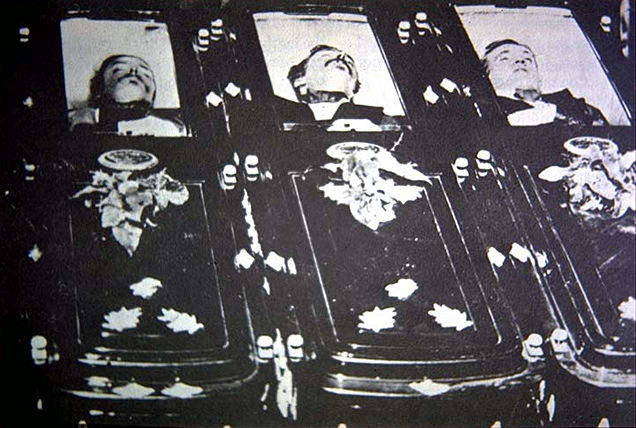
Wikimedia CommonsThe caskets of Tom McLaury, Frank McLaury, and Billy Clanton, the men who died in the gunfight at the O.K. Corral.
Initially, many people sided with the fallen Cowboys. When their funeral procession went through the town, more than 300 people came out to watch. Mourners packed close to four city blocks. The funeral was, as one of the local papers noted, “the largest ever witnessed in Tombstone.”
Soon afterward, a court trial saw the testimony of County Sheriff John Behan, who stated that he witnessed the cowboys attempting to surrender peacefully before violence broke out at the O.K. Corral.
After weeks of testimony and witness accounts, Judge Wells Spicer ruled that the gunfight at the O.K. Corral had not been a few lawmen keeping order, but rather committing “an injudicious and censurable act.”
In the end, the Earp brothers and Holliday were ultimately spared only because of the volatile nature of the Wild West.
“When we consider the conditions of affairs incident to a frontier country; the lawlessness and disregard for human life,” Judge Wells Spicer said during his ruling on the shootout at the O.K. Corral, “I can attach no criminality to his unwise act… I order them to be released.”
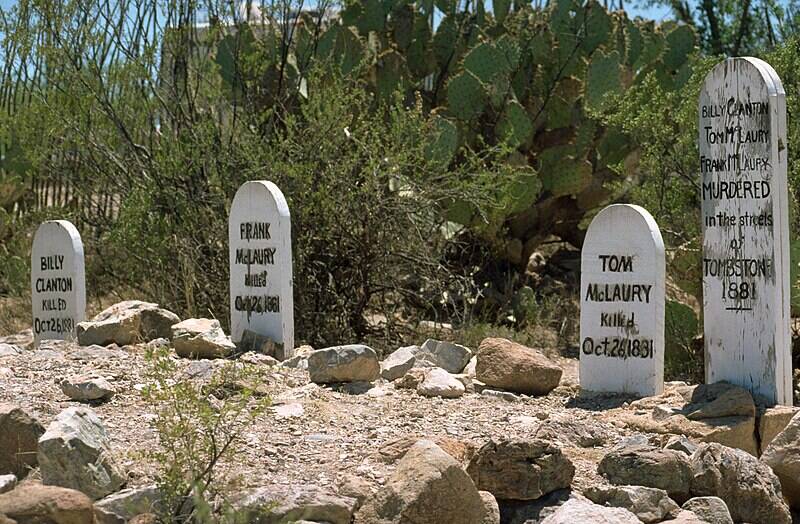
Wikimedia Commons/CC BY-SA 3.0The graves of Tom McLaury, Frank McLaury, and Billy Clanton.
Whether Spicer was right or wrong remains debatable today, but the gunfight at the O.K. Corral would never be forgotten. And it was just the start of one of the most brutal chapters in the history of the American frontier.
Not long after the judge’s fateful decision in the O.K. Corral gunfight, a group of Cowboys attempted to assassinate Virgil Earp. Virgil survived, but his brother Morgan was later not so lucky. In the middle of a game of pool in March 1882, the Earp brother was fatally shot in a second assassination plot, which was thought to be orchestrated by none other than Ike Clanton.
Wyatt Earp responded with a rampage of his own, which ended in a warrant for his arrest and Holliday’s arrest. The two quickly fled Tombstone, and Earp would spend the remainder of his days wandering the West, eventually settling in California, where he died at the age of 80 in 1929.
Hollywood Immortalizes — And Romanticizes — The Gunfight At The O.K. Corral
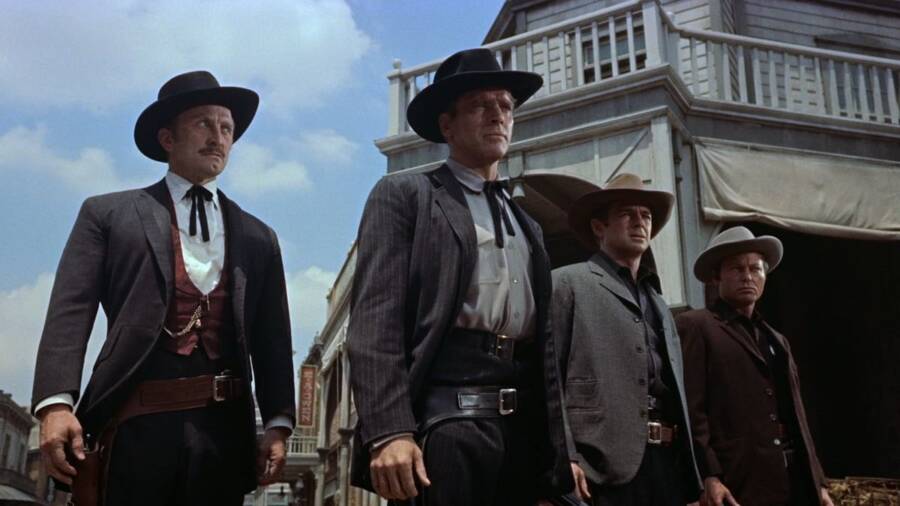
Wallis-HazenA scene from the 1957 film Gunfight at the O.K. Corral.
The gunfight at the O.K. Corral remains an infamous moment in American history. The event perfectly represented the gray area of justice that was part of the Wild West as the shootout was divisive, with no real “winner.”
The story was eventually adapted into a 1957 Western film titled Gunfight at the O.K. Corral, which largely painted the lawmen as the saviors. The true heroes of the O.K. Corral shootout remain ambiguous, as was the nature of the lawless West, but thanks in part to this film, the Earps and Doc Holliday often remain the protagonists of the tale in many retellings.
More recently, the 1993 movie Tombstone also depicted the gunfight at the O.K. Corral, again portraying the Earps and Holliday as fearless heroes.
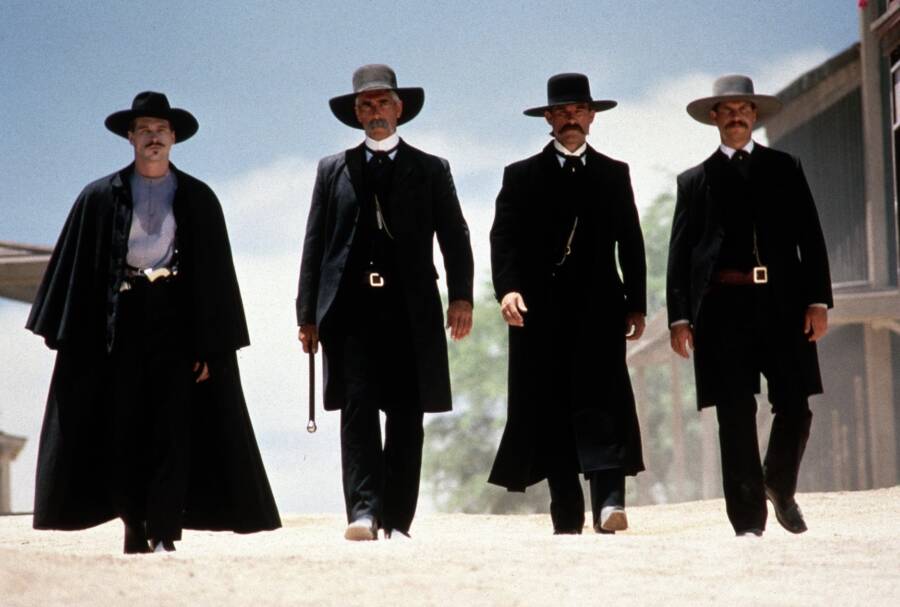
Buena Vista PicturesOne of the most memorable scenes from Tombstone is the depiction of the gunfight at the O.K. Corral.
Notably, Tombstone upped the dramatic buildup and suspense by making the actual shootout about 90 seconds long (rather than 30 seconds, as it played out in real life) and set the gunfight in a lot that was much larger than the one that the actual battle took place in. So while it was a memorable scene, it certainly wasn’t 100 percent historically accurate.
Hollywood films aside, the shootout has also inspired paintings, books, and television shows. Many of these shows center around Wyatt Earp and his adventures in Tombstone and other frontier towns. For better or for worse, this has helped shape public perception of the Wild West and the figures who lived there, even though that perception isn’t always accurate.
As the O.K. Corral’s official website puts it: “The Earps and the Cowboys have become iconic symbols of the untamed Western frontier. But of all the Old West gunbattles, why do these thirty seconds live on in history? In boomtowns like Tombstone, economic and political concerns dominated the community’s culture, reinforced by social allegiances. Turbulent events like the Gunfight remain significant today not because of their the ‘good’ defeated the ‘bad,’ but rather because they reflect the complex realities of the Western frontier.”
After this look at the gunfight at the O.K. Corral, learn about more iconic figures of the Wild West, including outlaw Johnny Ringo, Wyatt Earp’s mysterious wife Josephine Earp, and Doc Holliday’s lover Big Nose Kate.





